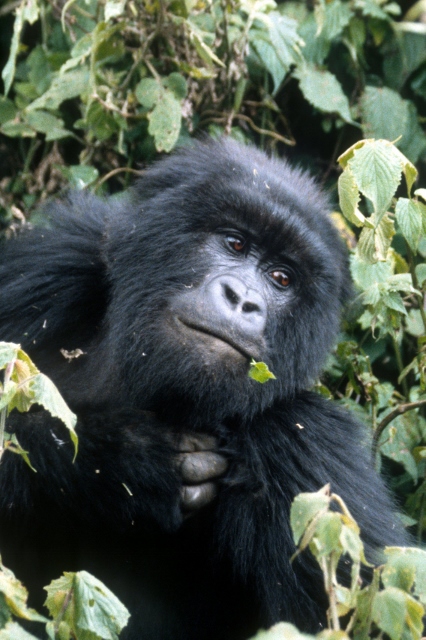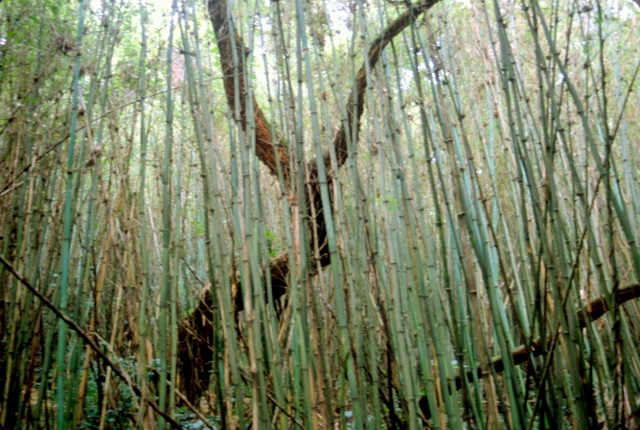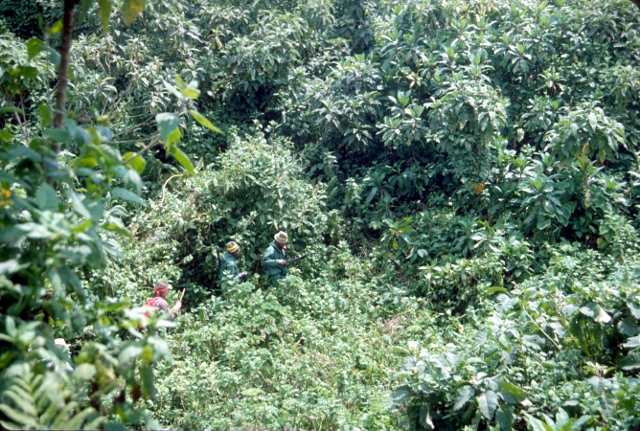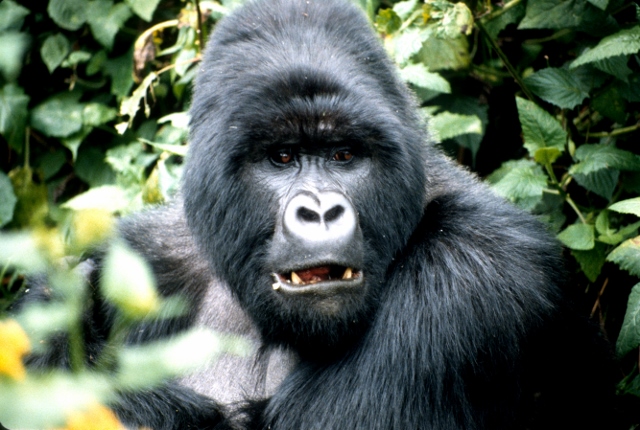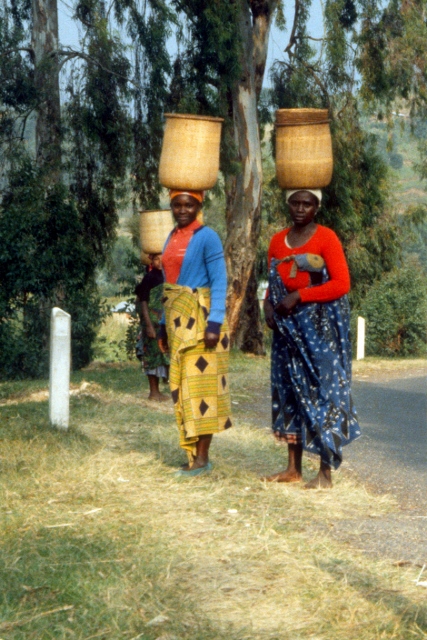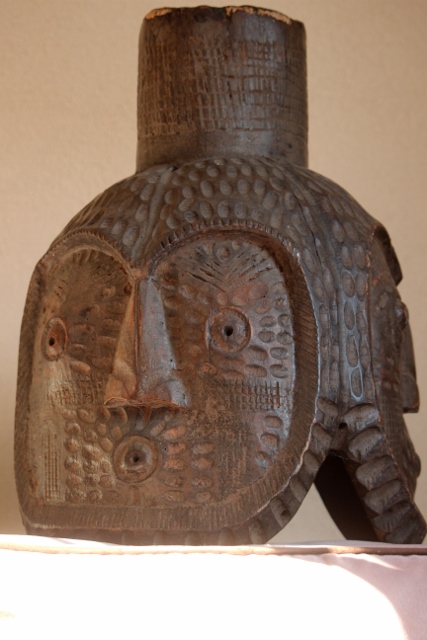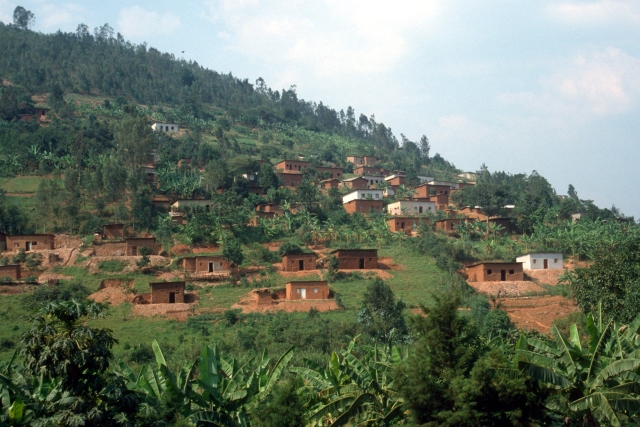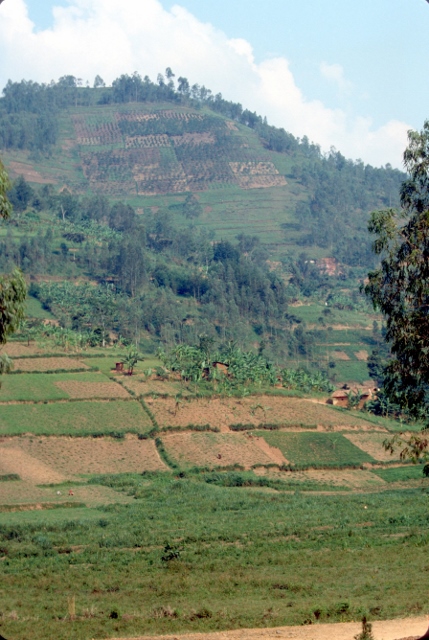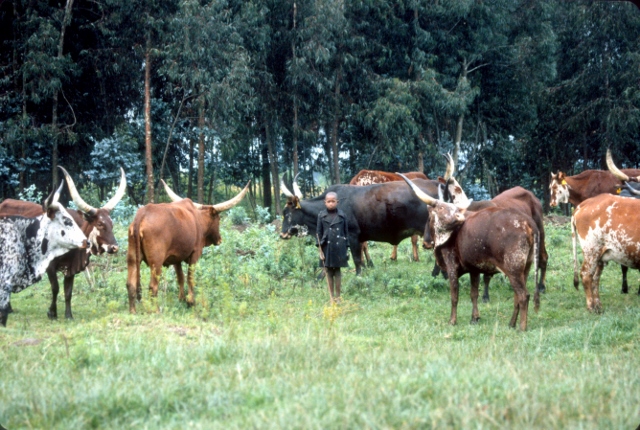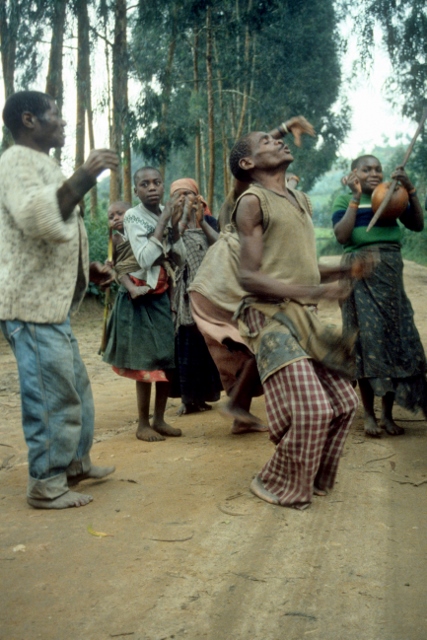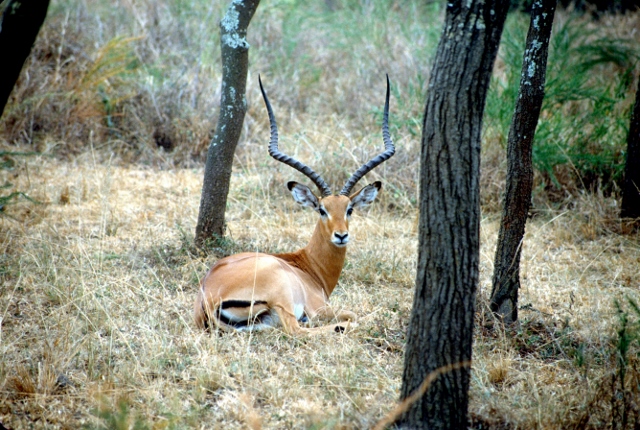East African Memories
Having been to all the game parks in Tanzania – where I lived in the period 1987-1989 – I also travelled to Rwanda during this time, to what was touted as the ultimate safari experience, a visit to the mountain gorillas in the Parc National des Volcans – with its Belgian colonial history, the lingua franca is French here. This tiny little country, wedged in between Tanzania and Congo (then called Zaire) had seen its share of ethnic violence, of course, but was, in 1989, not yet badly tainted by the genocide that occurred five years later, in 1994, and that changed the world’s view of Rwanda forever.
Parc National des Volcans
A safari to see the gorillas was not as straight forward as any of our Tanzanian safaris, which were essentially getting in a car and driving to the game park. For starters, you needed to make your advance reservation, for a specific day, with the Rwandan Tourist Office; turning up at the park was not done. Once you had your reservation, you needed to get to the park, early in the morning, to join your group, at the time a maximum of eight or ten people, or so. In the absence of public transport, we had rented a car and a driver.
From the park headquarters your group would depart to one of the four gorilla groups that were known to roam the mountain slopes, at the time. The guides would normally know where to go, or at least where the specific group you are targeting would have been the day before, anything between one and four hours scramble on slippery and dense overgrown terrain, often steeply uphill, too. The guides, with machetes, would go in front, to clear the way. Exciting adventure – but no guarantee that your group would actually find the gorillas, of course.
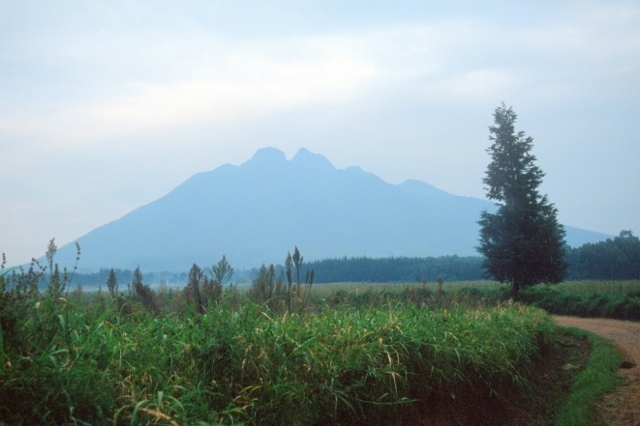
So we took off, through dense forest and bamboo, an uphill struggle of several hours – it was probably raining, too (it almost always rains, here). Occasionally, we got a view, across the mountains, some of the seven volcanos that make up the parc. Very impressive, but before long we got back into the rain forest again. Constantly looking around, you never know. And lo and behold, after a while we suddenly spotted out first gorilla, behind us! Soon we reached the whole group, maybe 10, 15, 20, I cannot remember. All of them involved in consumption, one way or another. Lots of bamboo, that much I know. Some of the smaller ones playful. And the big ones, especially the alpha males, the so-called silver-backs, marching in between, occasionally threatening the visitors – that would be us! But we had been instructed: if they charge, it is usually only to threaten – ‘usually’, what does that mean, in this context, these animals are much bigger than I am. Just stay calm, don’t stare them in the eyes but stay low, look down to the ground. Submissive. Right! I have to admit, this was one of the few times I didn’t question instructions!

the rest of the country
Having come all the way to Rwanda, we were not going to return after just one day seeing gorillas. So we toured around, spent time in Kigali, the capital, which I remember as a small, peaceful provincial town. It was here that I, employed by an oil company, bought perhaps the most curious of artefacts from my Africa collection: a wooden sculpture of a drill bit, those that are being used in oil well drilling. And indeed, several oil companies (but not my employer) had recently been exploring for oil in the East African Rift Lakes of Rwanda, Uganda and Congo (then called Zaire). Which makes this one of the few wooden artefacts that can be accurately dated!
One of the lakes – although I am not sure whether this was subject to oil exploration, as well – is Lake Kivu, one of the smallest African Rift Lakes.
The Rwandan countryside was tightly packed with agricultural plots, this being one of the most densely populated countries in Africa, with a constant need for more food. But almost nowhere was it flat, so all those plots on the hill sides required lots of terracing. And lots of people working the fields, of course.
It is only in the sparse rain forest areas that one finds fewer people. This is where the Twa live, a pygmy tribe that has its home in the Rift Lake areas, but mostly tries to avoid the other inhabitants, by whom they are being discriminated – to the effect that they also suffered badly during the Rwandan genocide of 1994. When we encountered them in the forest, five years earlier, they were earning some extra money by playing music, and singing and dancing, for tourists. A sad state of affairs.
Parc National de l’Akagera
Apart from the Volcanos National Park, with its unique gorilla population, there is also a more mainstream National Park, with the other African animals, comparable to the Tanzanian parks. We spent a day or two here, nothing different from what we were used to, except that we witnessed a kill by a group of lions: seeing them prepare, encircle some innocent gazelles, pound on one of them, and then devour the spoils, is in fact a sensational experience. On par with seeing the gorillas, I would say.

So overall, our week in Rwanda had been quite special, indeed.
